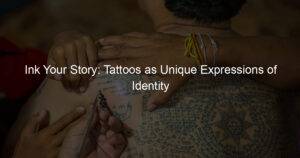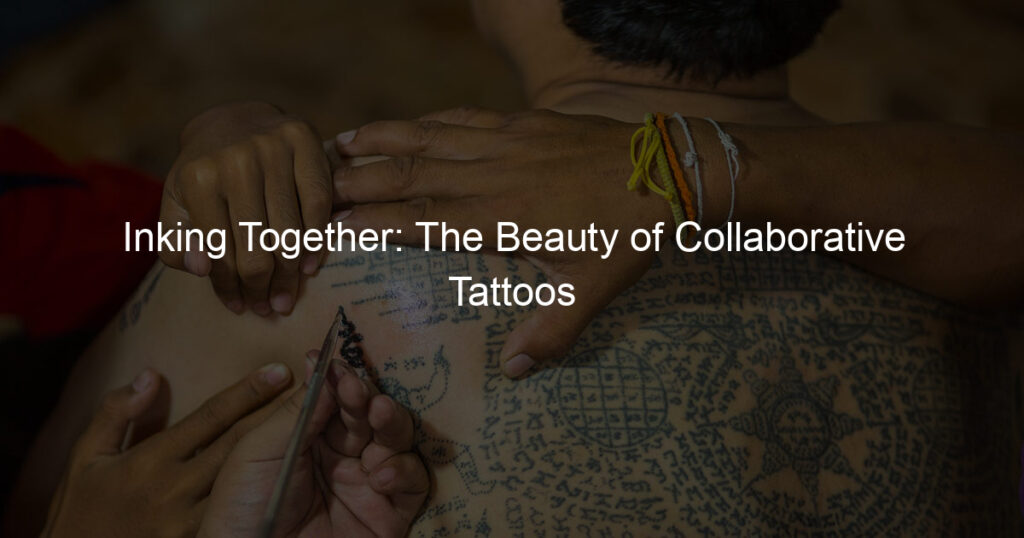Tattooing is an ancient practice with a long and varied history. In both ancient Egyptian and Greek cultures, tattooing served important roles in religious rites and social status. Today, tattoos are still popular among both men and women as a way to express their individuality. Whether you’re considering your first tattoo or you’re a seasoned collector, it’s worth taking the time to learn about the fascinating history of this art form.
What were tattoos used for in Ancient Egypt?
Ancient Egyptians used tattoos for several purposes. The majority of their tattoos seem to be related to their spiritual beliefs, often depicting gods and goddesses. It is also believed that the royal family adopted tattooing to show off their status and power in society. This practice then became more widespread among the general population as a form of decoration and identification.
Elite soldiers, priests, and servants were also known to wear tattoos as a symbol of self-expression or exhibited allegiance to certain tribes. It was so commonplace that hieroglyphics often depict female figures with elaborate tattoos on their faces and bodies. While the exact reason piercings were popular almost 4,000 years ago may never be accurately known, it is clear that markings have long held an important place in Egyptian culture.
What did ancient Greeks think of tattoos?
Ancient Greeks held a very different attitude towards tattoos than many of us do today. While modern-day tattoos have become incredibly commonplace, with many people using them as a form of self-expression, ancients Greeks perceived tattoos in a much different light. In ancient Greece, tattoos were primarily associated with slaves, prisoners, and convicts; it was believed that to be tattooed was a form of punishment, rather than something worth celebrating.
As for members of higher society, having any sort of marking on their skin was seen as uncultured and disgraceful behavior – not something to aspire to or accept. Even further still, ancient Greek mythology deemed those who boasted tattoos unfit for the afterlife; in this way of thinking it was forbidden to mark the body as it would make you undeserving of going to Olympus upon your death.
What is the significance of tattoos in ancient cultures?
Tattoos have existed in many civilizations since ancient times, and they often had a spiritual or symbolic purpose. Indigenous tribes valued the decorating of their bodies as an important rite of passage and a representation of their identity. In numerous cultures, tattoos were used to signify social status and confer protection from harmful forces in nature.
Additionally, for warrior societies, tattoos represented acts of courage and heroism during the battle. Tattooing is a part of much distinct cultural heritage across the world and its significance has been documented throughout history through visual art forms. Ancient culture viewed tattoos not only as body adornment but also as sacred objects that can be used to express unique meanings.
What is the ancient way of tattooing?
Tattooing is an art form that has been around since ancient times. While it’s become much more common nowadays, tattooing techniques were more limited back then. Ancient methods involved using basic hand-tapping tools made from various materials, such as fish and animal bones, thorns, and sharpened stones as rudimentary needles!
Dyes were also homemade using a variety of natural ingredients like soot, ash, or even dye obtained from crushed insects. Painful though this process may be, the results often had symbolic meaning – the designs would have special meanings to the person wearing them, representing faith or identity in some cases. It’s amazing and humbling to consider what our ancestors achieved with comparatively limited resources!
What did ancient people use for tattoo ink?
It is unclear exactly what ancient people used for their tattoos, however, some studies have indicated that they may have used soot from burnt wood, fruit, and vegetable juices from plants like onions and beets, incense soot, or even ash from a fire.
Interestingly, the more intricate tattoos were created with the use of corrosive wax; this would corrode the skin leaving a raised mark that would then be inked over. It’s incredible to think that such rudimentary ingredients could create lasting body art!
Summary: The Role of Tattooing in Ancient Egyptian and Greek Cultures
The tattoos of ancient Egyptian and Greek cultures had a powerful impact on their respective societies. Tattooing was used to indicate status and rank, express cultural identity, and mark religious rites of passage.
While this practice seems strange today, by exploring its historical roots we can gain insight into how much society has evolved. We also can appreciate how ancient people used creative techniques such as tattooing to raise public awareness of significant issues in their culture.
Moreover, we must understand that at one point these tattoos were considered beautiful works of art and skillfully crafted symbols of life. The importance that these cultures placed on their tattoos is both enlightening and compelling – we too should take notice and strive to remember this important part of history!














